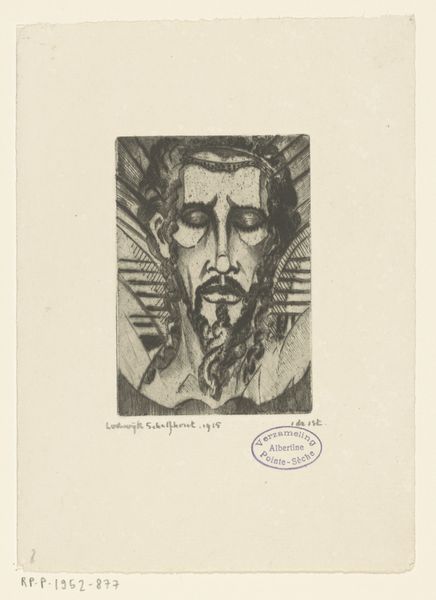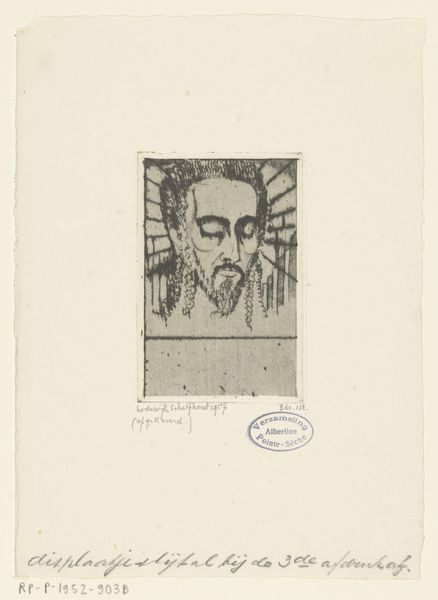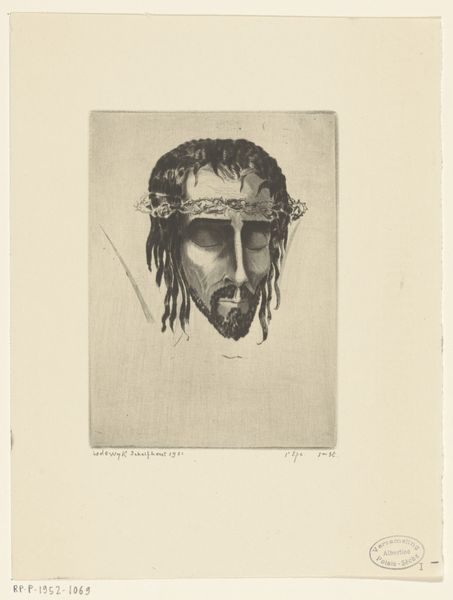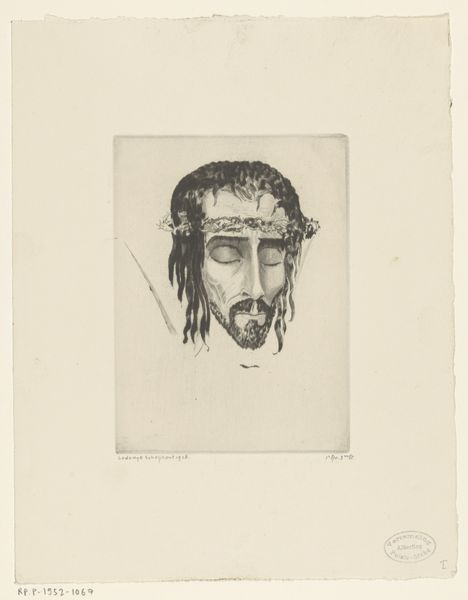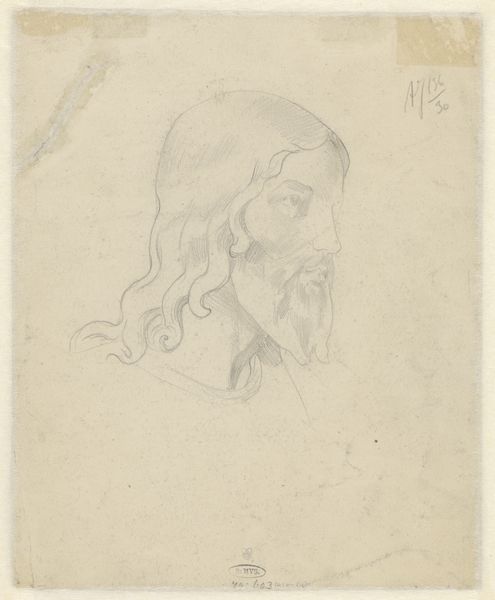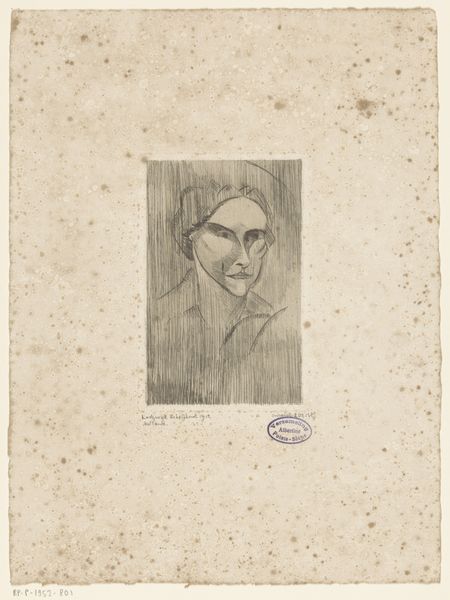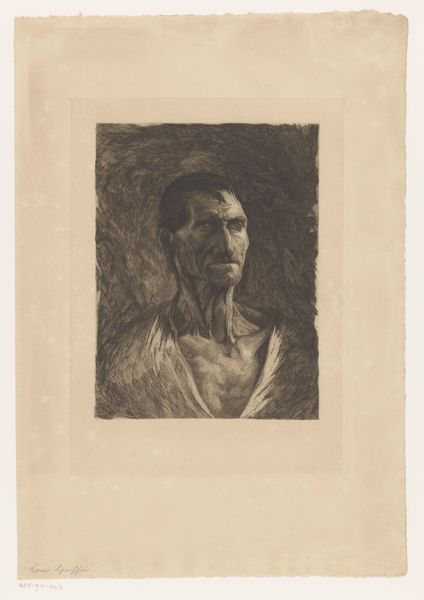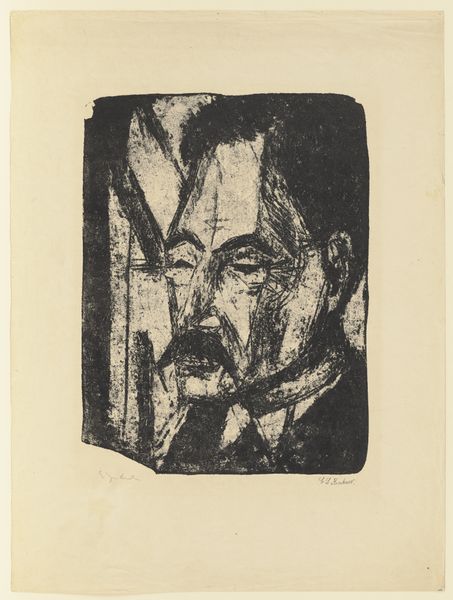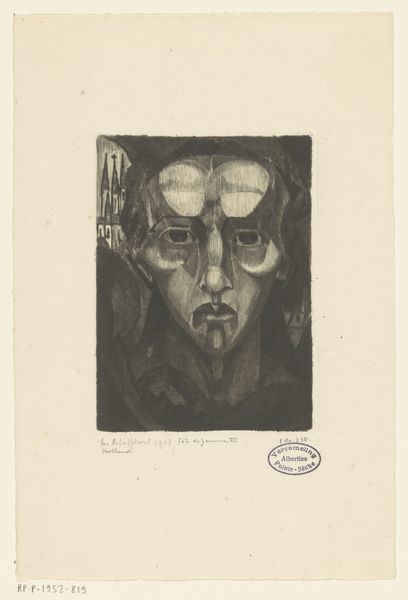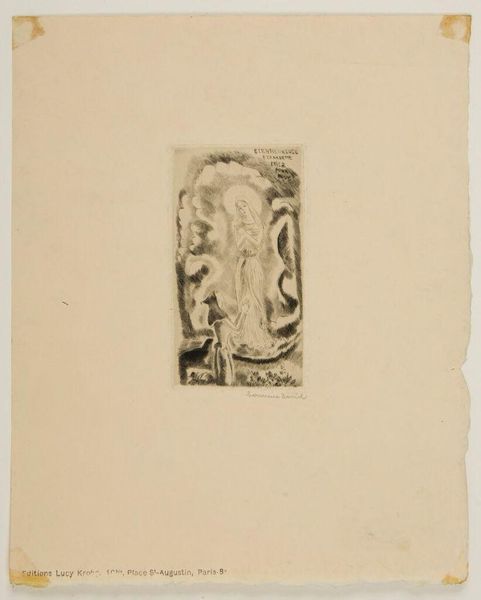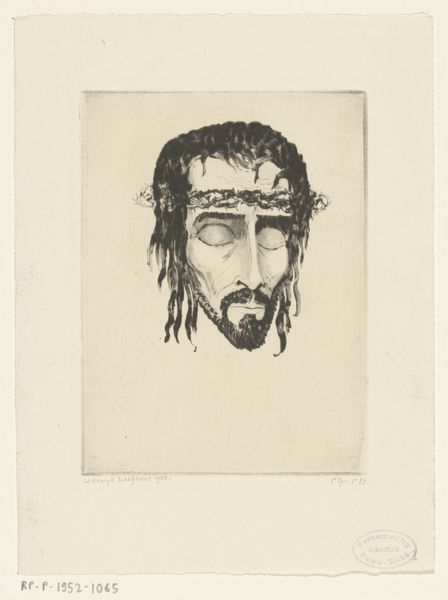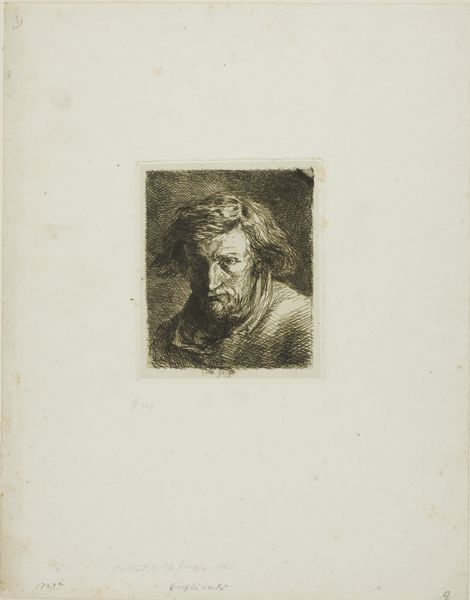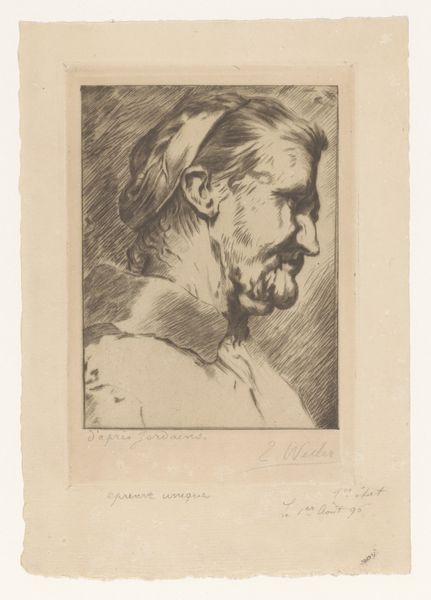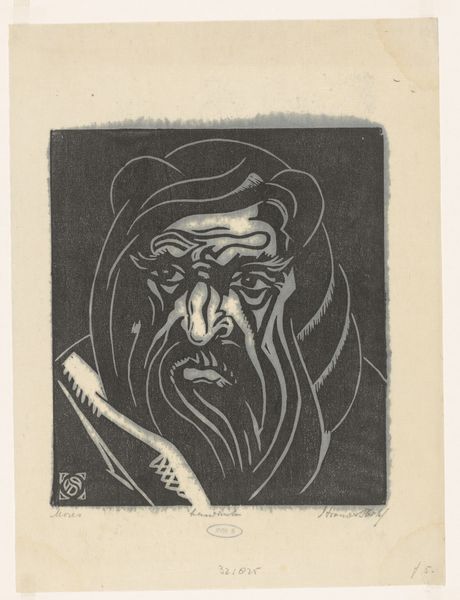
print, etching
#
portrait
# print
#
etching
#
figuration
#
expressionism
Dimensions: height 101 mm, width 70 mm
Copyright: Rijks Museum: Open Domain
Editor: Lodewijk Schelfhout’s "Head of Christ," created in 1915 and housed here at the Rijksmuseum, is an etching that strikes me with its almost harsh, graphic quality. It’s quite small, and the intensity of the lines creates a lot of tension in the face. How do you interpret this work through the lens of its formal elements? Curator: Indeed. Note the economy of line and the stark contrast employed. The artist uses the linear structure, both vertically in the facial features and horizontally in the background, to create a dynamic, almost agitated composition. Observe how the tightly packed, angular strokes that define the beard and hair differ markedly from the smoother areas of the face. Editor: So the varied mark-making isn’t just about depicting texture; it’s contributing to the overall mood? Curator: Precisely. The etching process itself is also critical. Consider the incised lines; their depth dictates how much ink is held, impacting the darkness and tonal range achieved. Schelfhout masterfully uses this, creating shadows and highlights that lend volume and gravitas to the figure. Also, the Expressionist influence can be decoded by its purposeful distortion of forms to convey intense emotion. The simplification, angularity, and the closed eyes create an introverted, suffering image. Editor: That’s fascinating. I hadn't considered the technical process so closely, or how that lends to the mood, as you say, by exaggeration and almost obscuring. I was mostly responding to the figure as presented. Curator: Consider how those formal decisions—line, value, composition—are working together to reinforce and communicate something about the essence of Christ, apart from historical or iconographic knowledge. The medium itself becomes part of the message. Editor: That really gives me a different perspective to go back and analyze similar images. Thank you for this different understanding. Curator: You're most welcome; it's about deciphering the visual language, the way form speaks volumes.
Comments
No comments
Be the first to comment and join the conversation on the ultimate creative platform.
